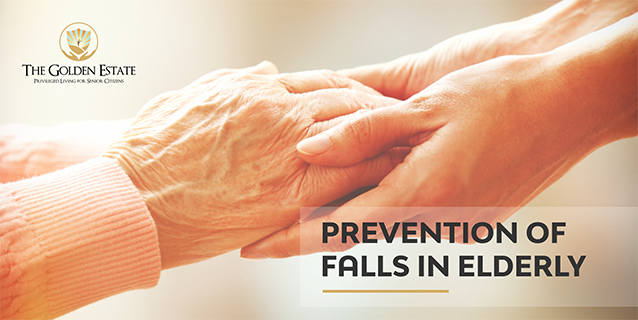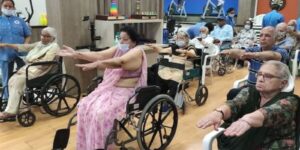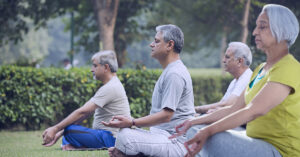Falling, slipping and tripping are the leading causes of accidental injuries in elderly people.
Many slip & fall accidents can be prevented. Something as simple as removing a rug on the floor, picking up an object lying on the stairs can save a senior from serious injury. Pay close attention to stairways and bathrooms, which are especially dangerous areas.
Here are Simple tips to prevent falls.
1. Make an appointment with your doctor– Begin your fall-prevention plan by making an appointment with your doctor. Make a list of your prescription and over-the-counter medications and supplements, or bring them with you to the appointment. Your doctor can review your medications for side effects and interactions that may increase your risk of falling. Be prepared to discuss instances when you almost fell but were caught by someone or managed to grab hold of something just in time. Details such as these may help your doctor identify specific fall-prevention strategies.
Discuss your health conditions and how comfortable you are when you walk — for example; do you feel any dizziness, joint pain, shortness of breath, or numbness in your feet and legs when you walk? Your doctor may evaluate your muscle strength, balance and walking style as well.
2. Stay Active– Physical activity can go a long way toward fall prevention. With your doctors approval consider activities such as walking or Yoga. These activities reduce the risk of falls by improving strength, balance, coordination, flexibility.
If you avoid physical activity because you’re afraid it will make a fall more likely, tell your Physical therapist. He or she may recommend carefully monitored exercise programs. Don’t let fear of fall make you less mobile.
3. Skip the Fancy Footwear– If you struggle with balance, consider changing your footwear as part of your fall-prevention plan. High heels, floppy slippers and shoes with slick soles can make you slip, stumble and fall. So can walking in your bare feet. Instead, wear properly fitting, sturdy shoes with non-skid soles. Sensible shoes may also reduce joint pain.
4. Remove home hazards – Take a look around your home. Your living room, kitchen, bedroom, bathroom, hallways and stairways may be filled with hazards. To make your home safer Remove boxes, newspapers, electrical cords and phone cords from walkways, move coffee tables, magazine racks and plant stands from high-traffic areas, secure loose rugs with double-faced tape, tacks or a slip-resistant backing or remove and repair loose rugs, wooden floorboards and carpeting right away, keep clothing, dishes, food and other necessities within easy reach, use nonslip mats in your bathtub or shower and a bath seat, which allows you to sit while showering.
5. Light up your living space– Keep your home brightly lit to avoid tripping on objects that are hard to see. Also Place night lights in your bedroom, bathroom and hallways. Place a lamp within reach of your bed for middle-of-the-night to avoid mishappening. Also Make clear paths to light switches that aren’t near room entrances and consider trading traditional switches for glow-in-the-dark or illuminated switches or Store flashlights that are easy-to-find in case of power outages.
6. Use assistive devices– Your doctor might recommend using a cane or walker to keep you steady. Other assistive devices can help, too. For example: Hand rails on both sides of stairways for support, a raised toilet seat or one with armrests, a sturdy plastic seat for the shower or tub plus a hand-held shower nozzle for bathing while sitting down. Also there is no harm in taking a helping hand.
7. Move carefully – Many people fall at home because of moving too quickly from a sitting to a standing position and vice versa. Preventing falls like this is as easy as taking your time. All you have to do is pause after going from lying down to sitting and from sitting to standing. Also take a pause before using the railing on stairs, whether going up or down.
8. Do your activities in stable and secured position– chose your activities wisely. Unnecessary movements can cause serious damage. After performing your exercise program, Change your clothes or take shower in sitting position.
9. Avoid walking in uneven surface as it can create unevenness and imbalance in you walking that can further lead to slipping or falling.
10. Be careful in your unstable position. Don’t let anything divert your attention while stepping Up/down or walking in an uneven surface.
6 SIMPLE EXERCISES IN FALL PREVENTION:
All exercises need to be done with the help of a sturdy support.
1. Heel Raises
2. Toe Raises
3. Heel toe stand
4. One Leg Stand
5. Tandem walking – Heel toe stand
6. Sit to Stand






